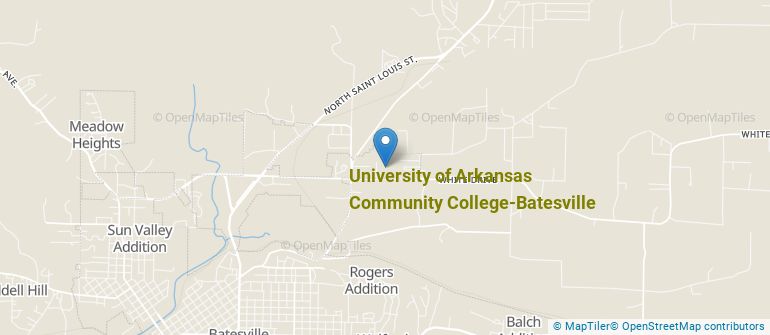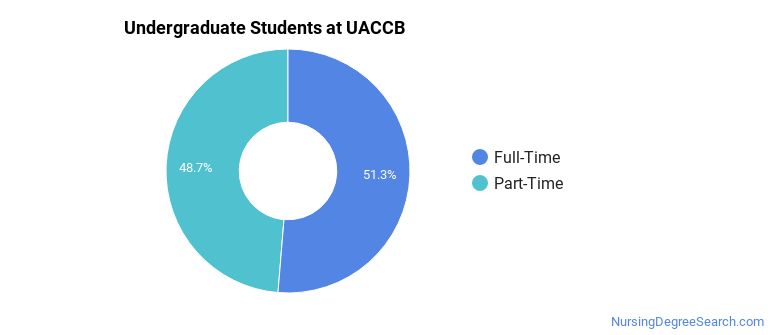University of Arkansas Community College - Batesville Nursing Programs
Located in Batesville, Arkansas, University of Arkansas Community College - Batesville is a public institution. Batesville is a good match for students who enjoy small-town life.
Where Is University of Arkansas Community College - Batesville?

Contact details for UACCB are given below.
| Contact Details | |
|---|---|
| Address: | 2005 White Drive, Batesville, AR 72503-3350 |
| Phone: | 870-612-2000 |
| Website: | www.uaccb.edu |
How Do I Get Into UACCB?
You can apply to UACCB online at: www.uaccb.edu/application/step1/
Can I Afford University of Arkansas Community College - Batesville?
Student Loan Debt
While almost two-thirds of students nationwide take out loans to pay for college, the percentage may be quite different for the school you plan on attending. At UACCB, approximately 5% of students took out student loans averaging $3,856 a year. That adds up to $15,424 over four years for those students.
University of Arkansas Community College - Batesville Undergraduate Student Diversity

Gender Diversity
Of the 628 full-time undergraduates at UACCB, 30% are male and 70% are female.

Racial-Ethnic Diversity
The racial-ethnic breakdown of University of Arkansas Community College - Batesville students is as follows.

| Race/Ethnicity | Number of Grads |
|---|---|
| Asian | 8 |
| Black or African American | 12 |
| Hispanic or Latino | 40 |
| White | 521 |
| International Students | 3 |
| Other Races/Ethnicities | 44 |
University of Arkansas Community College - Batesville Nursing Concentrations
The table below shows the number of awards for each concentration.
| Major | Basic Certificate | Associate’s | Undergraduate Certificate | TOTAL |
|---|---|---|---|---|
| Nursing Assistant/Aide and Patient Care Assistant/Aide | 51 | 0 | 0 | 51 |
| Registered Nursing | 0 | 43 | 0 | 43 |
| Licensed Practical/Vocational Nurse Training | 0 | 0 | 16 | 16 |
| TOTAL | 51 | 43 | 16 | 110 |
References
*The racial-ethnic minorities count is calculated by taking the total number of students and subtracting white students, international students, and students whose race/ethnicity was unknown. This number is then divided by the total number of students at the school to obtain the racial-ethnic minorities percentage.
More about our data sources and methodologies.
